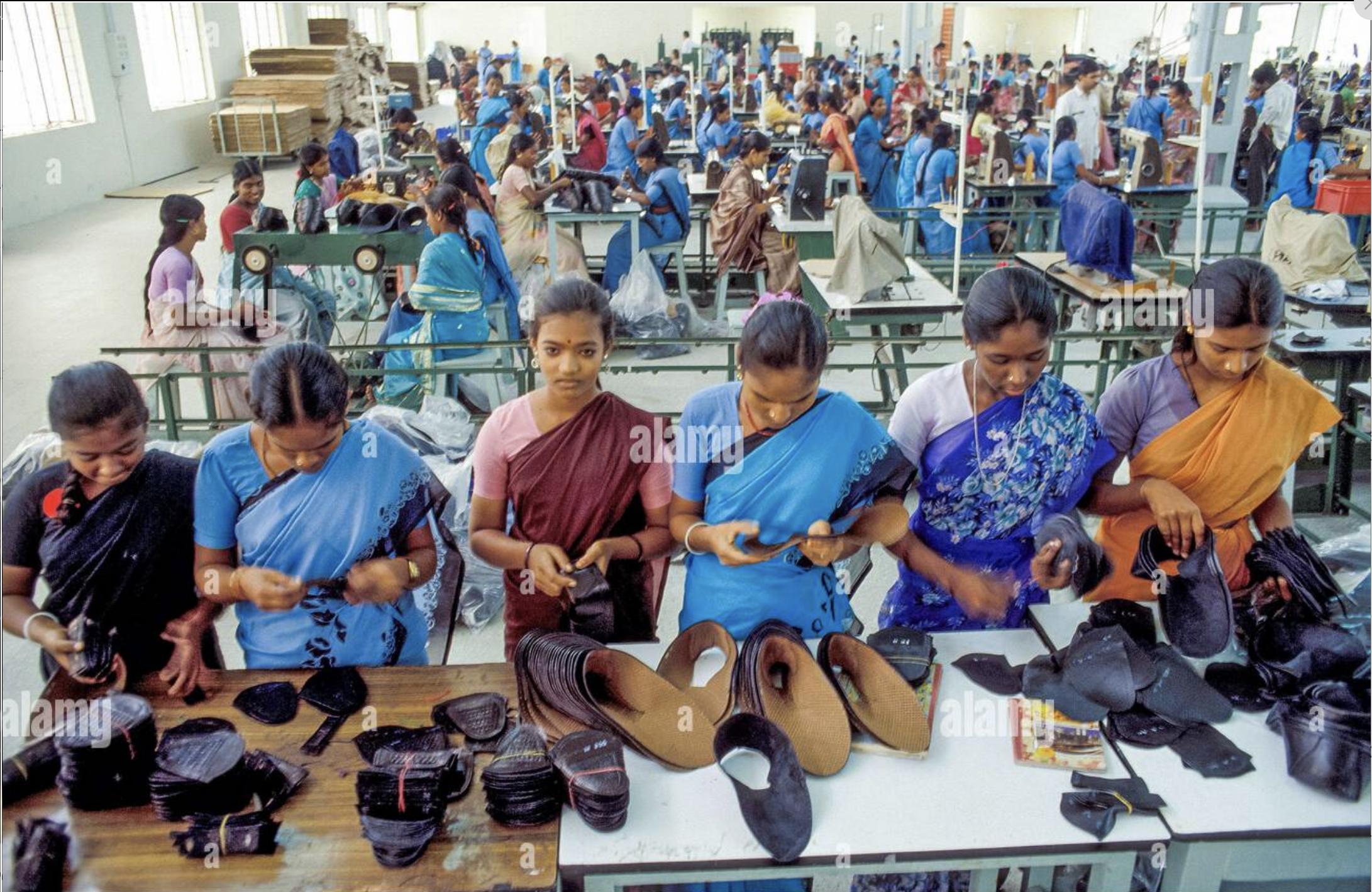Women Are The Workforce Multiplier India's Factories Need

Meta description: Global competitors are leveraging women to boost productivity and scale. India's leather and footwear sector must stop ignoring its biggest untapped workforce
India's Manufacturing Edge Is Being Wasted
Our team recently came across a thought-provoking LinkedIn post. An Indian businessman shared his experience of visiting a prospective investee's manufacturing unit in China. What he saw left a deep impression on him.
He observed a single man operating a fully automated production line for 12 hours straight. One man. One line.
When he questioned the promoter about the higher margins at their Chinese facility, the explanation pointed to two decisive factors:
- 300 basis points advantage in material costs
- 80 basis points edge due to labour efficiency
This raised a natural question: How does a country with higher labour costs offer a labour advantage?
The promoter's answer was simple—and telling:
“Chinese women are four times more efficient than our male workers. Each woman handles three to four lines, while here, one man handles one. They don’t leave until the work is done. No unions, no absenteeism. They take pride in contributing to a $19 trillion economy.”
This insight highlights not just the discipline and dedication of Chinese women workers in the apparel and footwear industries—but also the huge opportunity that India is yet to seize.
The case for women in India's manufacturing workforce
India's leather and footwear industry is highly labour-intensive, employing around 4 million people. However, as per Council of Leather Exports (CLE) data only 30% of that workforce comprises women, and a majority of them are concentrated in South India, where female workforce participation is traditionally higher. In contrast, North Indian clusters still lag far behind.
Meanwhile, in China, softline manufacturing—including garments and footwear—is dominated by women, with female-to-male ratios as high as 4 to 1 on the factory floor.
The Indian leather and footwear sector has the potential to create thousands of additional jobs, yet women remain underrepresented. This must change—urgently and deliberately.
Women are the competitive advantage
Here’s why increasing women’s participation in the workforce—especially in the leather and footwear sector—makes both social and business sense:
1. Higher efficiency and output
Chinese facilities have shown that women workers often outperform in repetitive, precision-based tasks. With proper training, women can manage more than one line, improving throughput without additional cost.
2. Lower attrition, higher accountability
Global trends show women are less likely to switch jobs frequently and often show greater commitment. Factories that have invested in female workers report higher continuity and fewer disruptions.
3. A cultural shift towards pride in work
In China, contributing to national growth is a source of pride. Indian women are no less capable of matching that drive. All they need is access, opportunity, encouragement and a safe work environment.
4. Inclusive Growth = Sustainable Growth
Empowering women in manufacturing can uplift entire families, reduce dependency ratios, and increase household incomes. A more inclusive workforce strengthens local economies and social fabrics.
LSSC and Industry leaders are enabling this shift
- Skilling programs tailored for women: Targeted training in soft skills, machine operation, safety, and productivity can help women overcome hesitation and build confidence. LSSC is committed to expanding access to such programs.
- Factory-level sensitisation: Training for male colleagues and supervisors to ensure a respectful and supportive environment. At the factory level we have to imagine a greater role play for women and pay parity to encourage them to join the industry. Better amenities like wash rooms, rest rooms, crèches and flexible work hours can make whole lot of difference.
- Partnerships with MSMEs: Many smaller units are eager to scale but need help with workforce strategy. LSSC along with its partners is helping them bridge that gap where availability of trained women workforce is not an issue.
- Policy Advocacy: There should be incentives for factories that achieve gender diversity on the floor. This would create an enabling environment for manufacturers to make the necessary changes for welcoming more women to the workforce. LSSC supports advocacy for such policies to create an enabling ecosystem for employers.
A change waiting to happen
China has shown that a skilled, empowered female workforce can drive productivity and profitability in manufacturing. India's leather and footwear industry is on the cusp of that same transformation. But it won't happen unless we invest in our women—through skilling, inclusion, and opportunity.
Let's not wait to catch up. Let's lead with purpose.
The Leather Sector Skill Council is committed to making women an integral part of India's manufacturing story. The Council is working closely with manufacturers and exporters to increase the participation of women in the workforce. LSSC is rolling out skilling and upskilling courses for women for making them a force that propels Indian leather and footwear sector.